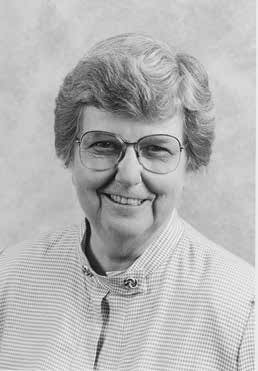by
Thomas Dworetzky, Contributing Reporter | May 15, 2015
From the May 2015 issue of HealthCare Business News magazine
Mary Ellen Avery’s research into the Respiratory Distress Syndrome (RDS) is considered to be one of the most significant advances in neonatal care. Neonatal RDS affects infants whose lungs have not yet fully developed. When Avery began her work, about 15,000 babies succumbed to the syndrome on an annual basis. It’s now estimated that her pioneering research has helped to save more than 800,000 lives.
Avery was born on May 6, 1927 in Camden, New Jersey. Her family lived next to a pediatrician named Dr. Emily Bacon, who inspired Avery to pursue a medical career at an early age. It was Dr. Bacon who took Avery to see her first premature baby.
In 1948, Avery graduated at the top of her class from Wheaton College with a chemistry degree and enrolled into medical school at Johns Hopkins University School of Medicine. Upon graduating in 1952, Dr. Avery was diagnosed with tuberculosis, a condition that fueled her interest in the function of the lungs.
After a long recovery and a trip abroad, Dr. Avery returned to Johns Hopkins to complete her internship and residency. She then moved on to Harvard Medical School, where she had a research fellowship in pediatrics. It was here that she discovered the cause of RDS. When comparing the lungs of infants who died of the syndrome with those of healthy animals, she noticed that the babies were missing a white substance, which she hypothesized played a critical role.
While reading through the available literature on the subject, Dr. Avery came upon an article by Dr. John Clements, who was studying the consequences of toxic gas inhalation for the U.S. Army. He had come across the substance in his research. While on vacation, Dr. Avery got into her car and drove to Maryland to meet with Dr. Clements.
“And what was a baby doctor doing going to visit somebody who was studying war gas defenses?” she later wrote, “Well, I was the somebody that said, ‘I’ve got to meet this man.’” Dr. Clements proved to be instrumental in helping Dr. Avery figure out the essence of the white substance. It turned out to be surfactant, a mixture of fat and proteins in the lungs that enables people to breathe. Babies carried to full-term almost always develop surfactants before they are born, whereas premature babies don’t. “There was one moment of insight, and that was it,” she wrote of the meeting.
Her findings served as the foundation for an influential 1959 paper published in the American Journal of Diseases and Children. A Japanese pediatrician then used the paper to identify a treatment for RDS — he developed a synthetic surfactant from the lungs of cows. Dr. Avery was thrilled about the new intervention. Dr. Avery went on to become an assistant professor of pediatrics at Johns Hopkins University, where she was also put in charge of newborn nurseries. She then served as chair of the department of pediatrics at McGill University in Canada, and in 1974, she returned to the U.S. to join the faculty of Harvard Medical School.
Dr. Avery was the first woman to serve as physician-in-chief at Boston’s Children’s Hospital and the first woman to serve as president of the Society for Pediatric Research. She was also the first pediatrician to head the American Association for the Advancement of Science. In 1991, President George Bush presented Dr. Avery with the National Medal of Science for her contributions to understanding and treating RDS. She passed away on December 4, 2011, at age 84. No matter what position she held throughout her distinguished career, Dr. Avery always had a deep love for science. “I am so saturated and pleased to share it with anybody who will listen,” she once said.
